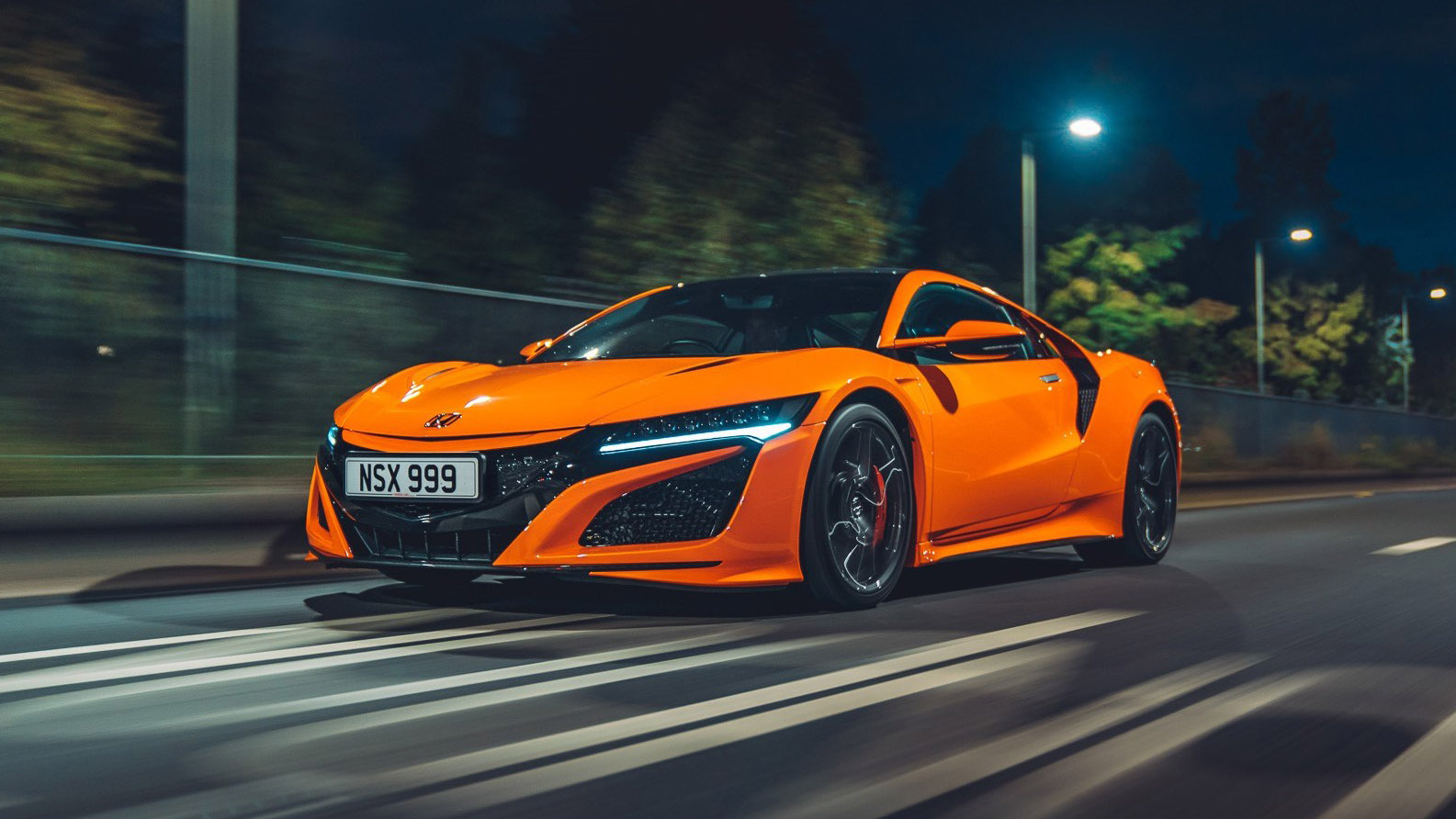With the increasing number of ‘extreme weather’ claims and a growing volume of cars on UK roads, insurance premiums are, on average, heading in only one direction up.
That’s why identifying the cheapest cars to insure could lead to substantial savings over time.There are various strategies for securing a more affordable car insurance policy.
These range from having a ‘black box’ data recorder installed which monitors and reports your driving habits to relocating to cities like Leeds or Sheffield, which are considered the most cost-effective areas in the UK for car insurance,
However, there may be a simpler approach purchasing one of the cars listed here. These ten models currently available in the UK fall into the lowest insurance groups.
Unsurprisingly, factors such as engine size and performance play a key role in group classification which explains the presence of numerous small-engined vehicles on this list.
But that’s not all; other elements are also considered, including the price of replacement parts, repair costs following an accident, the expense of a total replacement if the car is written off, the presence of active safety features, and anti-theft measures.
Cheapest Cars To Insure
Naturally, insurance calculations also factor in details about you, the driver such as your age, driving history, and no-claims discount but the vehicle you choose significantly influences what insurers believe you should be charged.
We evaluate vehicles through real-world driving and assess each model’s unique strengths, so when we recommend these cars as affordable to insure, you can also rely on our insights into what they’re like to live with day to day.
Hyundai i10 1.0 auto
If you’re after the cheapest insurance available, be ready to make some sacrifices. In our comprehensive review of the Hyundai i10, we referred to the basic petrol engine as “gutless” and the automatic gearbox as “dire.”
And which version boasts the lowest insurance? That would be the 1.0-litre petrol paired with the automatic gearbox.
It falls into the lowest insurance group Group 1 meaning your coverage will cost next to nothing. In that context, “gutless” and “dire” might not sound so bad after all.
The i10 excels in other respects too. It remains one of the few survivors in the city car segment, especially now that models like the VW Up, Peugeot 108, and Ford Ka have been discontinued.
While it’s still relatively affordable, its price has crept up recently, putting it close to competitors like the Renault Clio and MG3.
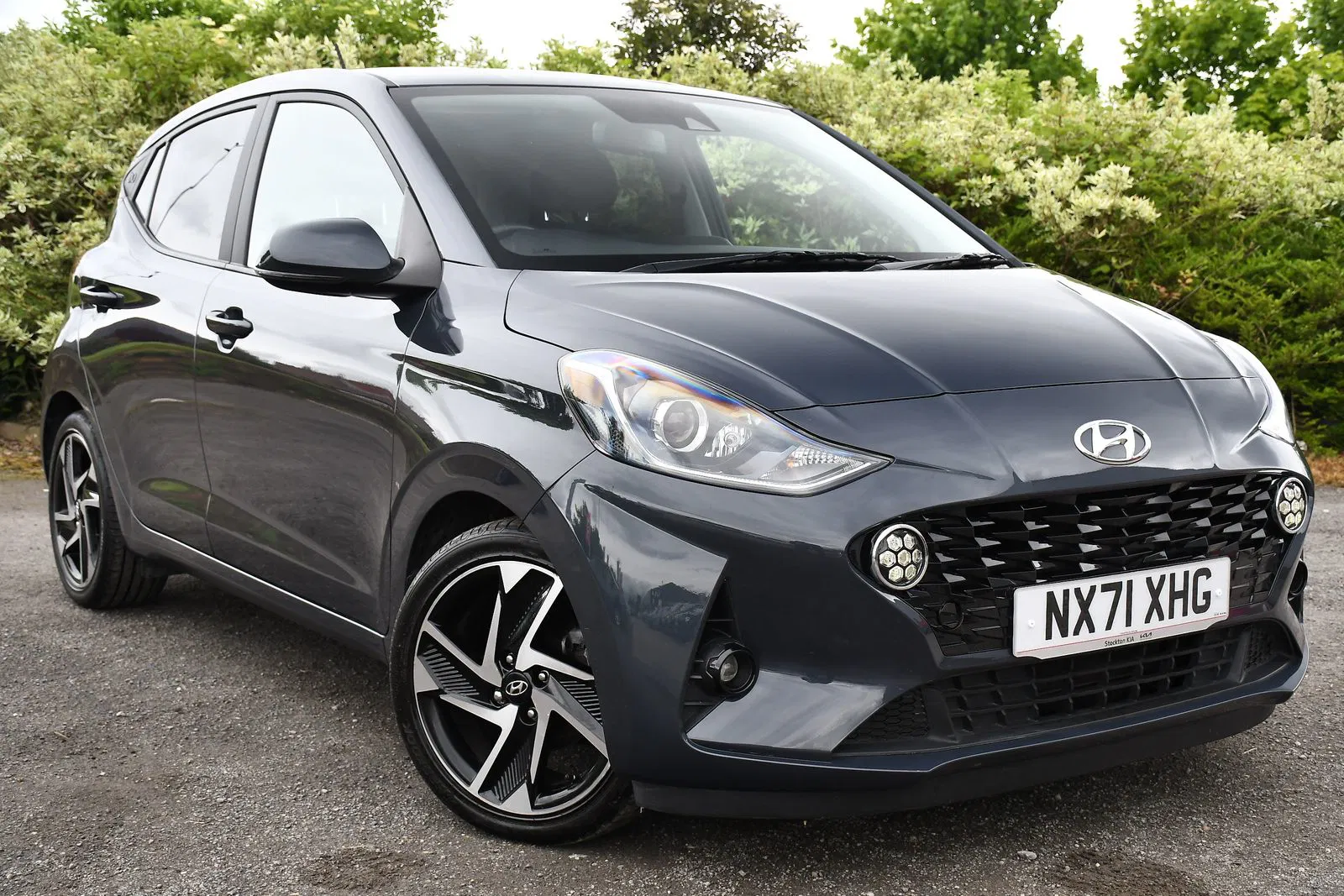
This price increase is largely due to Hyundai equipping the i10 with costly new safety technology to comply with updated regulations.
However, those same features also help reduce insurance costs a case of swings and roundabouts.
For a compact vehicle, the i10 is impressively spacious (even the 252-litre boot holds its own), and the cabin feels solidly built, despite the use of budget materials.
It’s enjoyable to drive, too the steering is responsive, and its small, lightweight frame makes it feel agile and lively.The major drawback is the pairing of the 1.0-litre engine with the automatic transmission.
The five-speed auto is particularly sluggish, taking its sweet time to shift… a… gear… there it goes. The 63hp engine lacks power as well, with a glacial 0–62mph time of 18.4 seconds enough time to make a cup of tea.
However, opting for the much better manual gearbox only bumps you up one insurance group, to Group 2.
Volkswagen Polo 1.0 Life
Hunting for low insurance premiums doesn’t mean you have to settle for a bare-bones driving experience.
This VW Polo sits in Group 3, so while it doesn’t have the absolute lowest premium, it’s still close and you get a truly well-rounded, refined car in the process.
As with the Hyundai i10 above, you’ll need to make a few trade-offs to keep insurance costs down.
This version of the Polo comes with the most basic engine in Volkswagen’s range: a naturally aspirated 1.0-litre three-cylinder petrol with just 80hp.
Want a turbocharged version? You’ll need to upgrade to the 95hp model, which falls into a higher insurance group.

With just 80hp, don’t expect exciting acceleration the 0–62mph sprint takes 15.6 seconds. That said, the engine is eager and responsive enough that the car doesn’t feel painfully slow, and it delivers excellent fuel economy.
To qualify for Group 3 insurance, you’ll need to go for the entry-level Polo Life trim, but this still includes useful features like electric windows all around and digital gauges, so the upscale interior doesn’t feel stripped down.
Passenger space is generous in both the front and rear, although the 351-litre boot isn’t as roomy as some competitors’, such as the nearly identical Skoda Fabia.
On the road, the Polo offers a smooth, composed driving experience. The little engine emits a pleasant three-cylinder thrum, and the car’s ride quality over bumps is impressive thanks in part to its small 15-inch alloy wheels.
Yes, there are other superminis that offer more driving thrills, but the Polo stands out for its blend of practicality, comfort, and safety (it comes loaded with standard safety kit and has scored highly in Euro NCAP crash tests).
Kia Picanto 1.0 DPi 2
“Sporty” may be a stretch in this segment, but the Kia Picanto certainly feels more engaging and fun to drive than its Hyundai i10 sibling, despite both cars sharing the same underlying platform.
That extra dose of fun might be the reason why the Picanto lands three insurance groups higher than the Hyundai.
Unlike the i10, both manual and automatic versions of the Picanto 1.0 DPi in the ‘2’ trim level fall into Group 4.
So thankfully, you’re not forced to endure the jerky automatic gearbox experience that comes with the Hyundai.
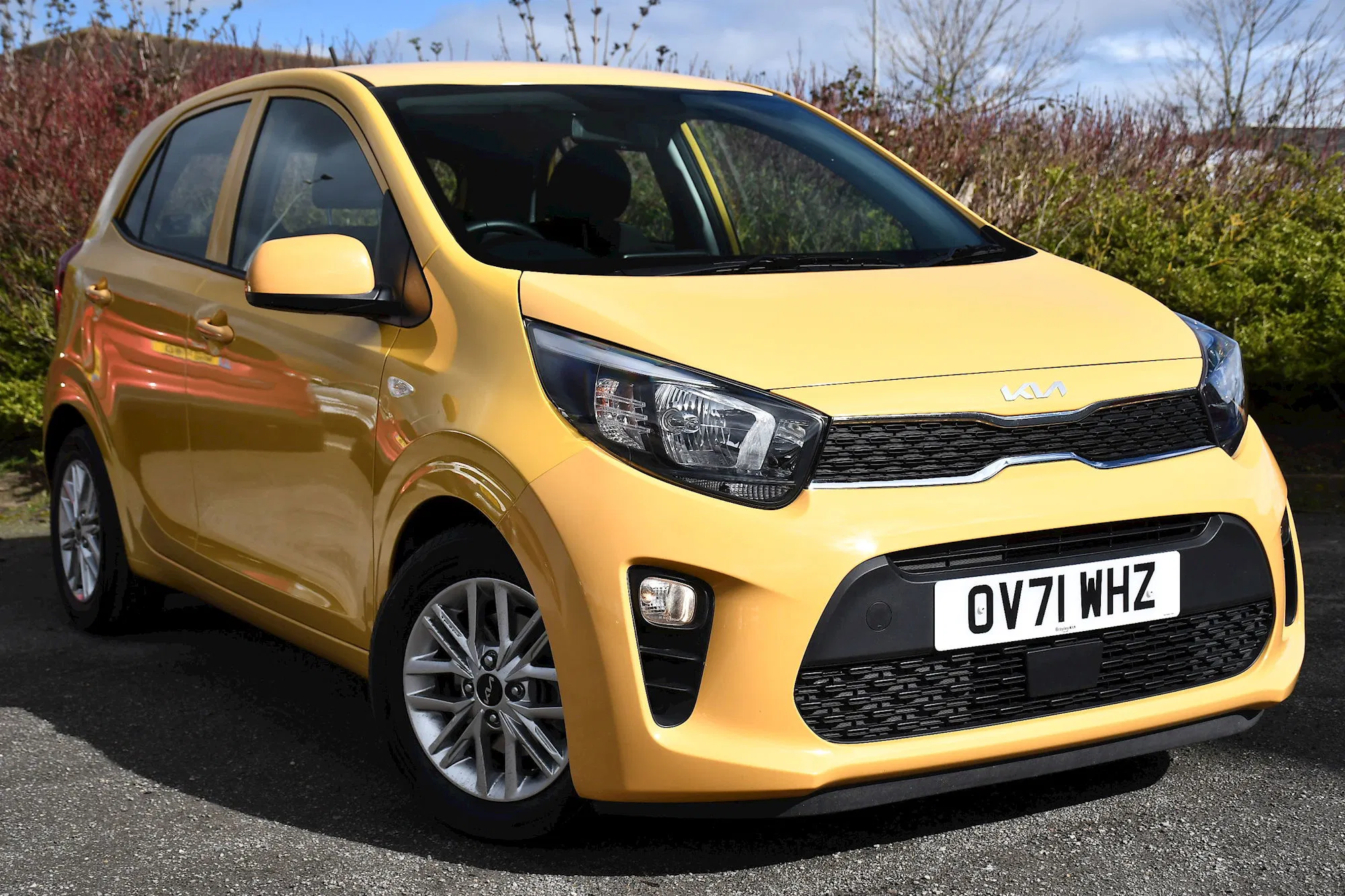
However, you are still working with the same basic 63hp three-cylinder engine, so performance is nothing to write home about it manages 0–62mph in a leisurely 15.4 seconds.
On the plus side, fuel efficiency is excellent. Kia claims 54mpg, and with careful driving, you might hit close to 60mpg.
While longer road trips may prove tiresome the upright seating position gets uncomfortable and it’s not the quietest vehicle the Picanto is ideal for urban driving and even fun on winding rural roads. A tight 9.4-metre turning circle makes it easy to manoeuvre and park.
Inside, the cabin may be simple and built from inexpensive materials, but it doesn’t feel cheap or poorly made. The 255-litre boot is also quite generous considering the car’s tiny footprint.
Skoda Fabia 1.0 MPI
Why does the Skoda Fabia fall into a higher insurance group than the Volkswagen Polo, even though it uses the same 80hp engine and shares the same fundamental structure?
The exact reason isn’t entirely clear, but whatever the cause, the Fabia does end up being slightly more expensive to insure than the Polo.
Still, considering that you’re saving over £1,000 when buying the Fabia, that insurance difference becomes much easier to accept.
Since it shares its underpinnings with the Polo, the Fabia 1.0 MPI also comes equipped with the non-turbo 80hp engine.
That means the 0–62mph time is a rather sluggish 15.7 seconds. On the upside, if you’re not pushing it hard, you can enjoy fuel economy figures better than 50mpg. Plus, the three-cylinder engine has a pleasant sound when revved.
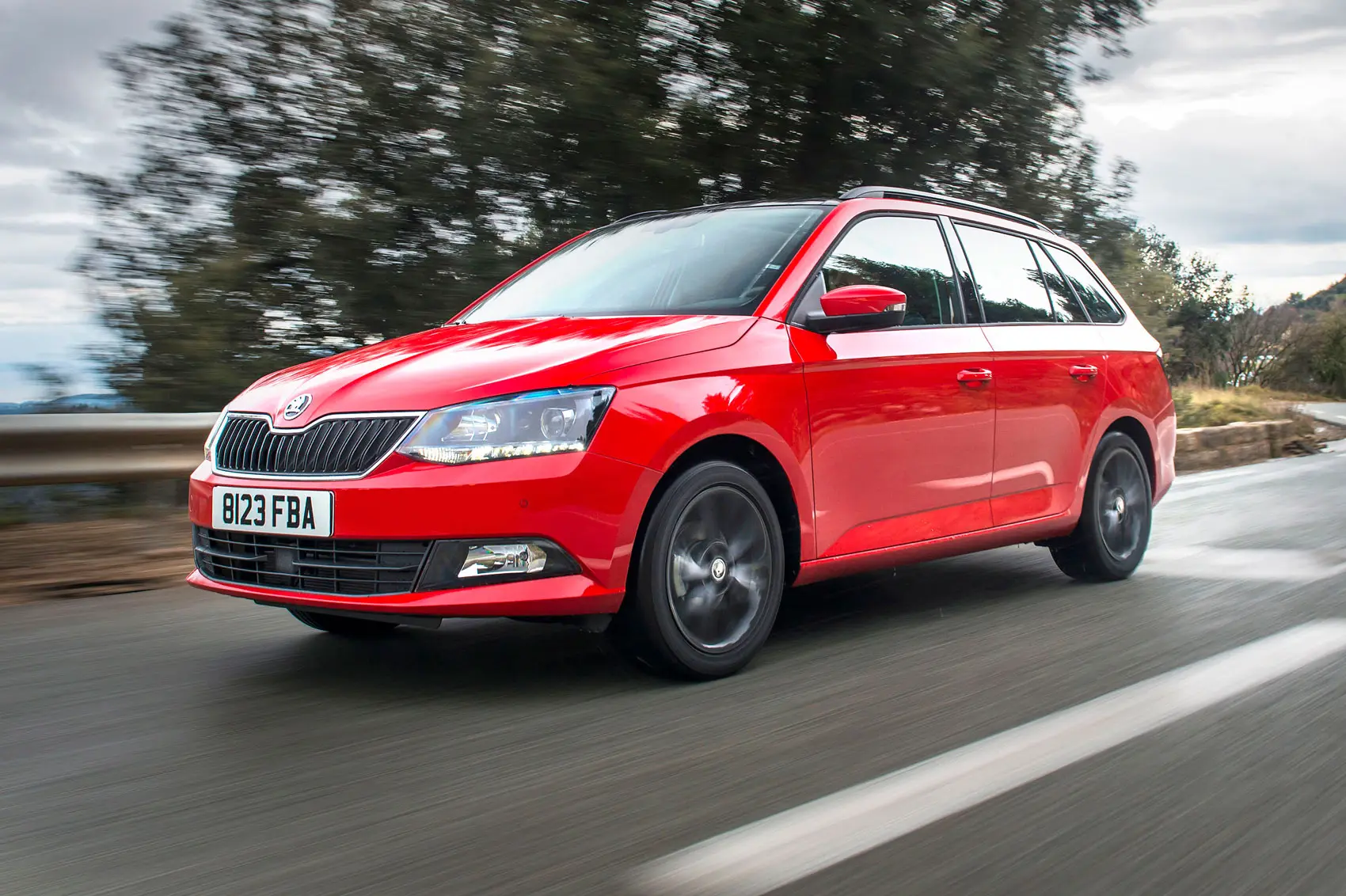
Inside the cabin, the Fabia manages to feel a little livelier than the VW, with a dashboard design that’s more interesting though perhaps not quite as solidly built.The Fabia also shines when it comes to practicality.
Space is excellent throughout, and its 380-litre boot surpasses the Polo’s, putting it on par with larger and more expensive hatchbacks. Just be aware that an adjustable boot floor comes as an optional extra.
In city driving, the Fabia is agile and easy to manoeuvre, and when you get up to speed, it remains impressively quiet, with minimal wind noise on the motorway.
The suspension is well-judged and smooth, aided by the small standard wheels on this base model, so you won’t get bounced around on urban streets.
On twisty country roads, the Fabia stays composed and stable. It’s not exactly thrilling to drive this certainly isn’t a junior hot hatch but it’s far from boring.
And given its insurance classification, a more sedate experience is expected.
Toyota Aygo X 1.0 Pure
When Toyota reinvented the Aygo as the Aygo X, it completely ditched the old car’s minimalist city car design in favour of a more rugged and distinctive look.
With chunky styling elements and SUV-inspired plastic cladding around the wheelarches and sides, the Aygo X certainly makes a visual statement.
Just don’t mistake it for a serious off-roader it’s no 4×4, though it does offer slightly more ground clearance to handle rougher surfaces or unpaved roads.
Step inside, and the Aygo X impresses with its trendy design and spaciousness, but the cabin materials are less appealing.
There’s a noticeable amount of hard, scratchy plastic, which detracts from the interior feel especially surprising given Toyota’s usually strong reputation for build quality.
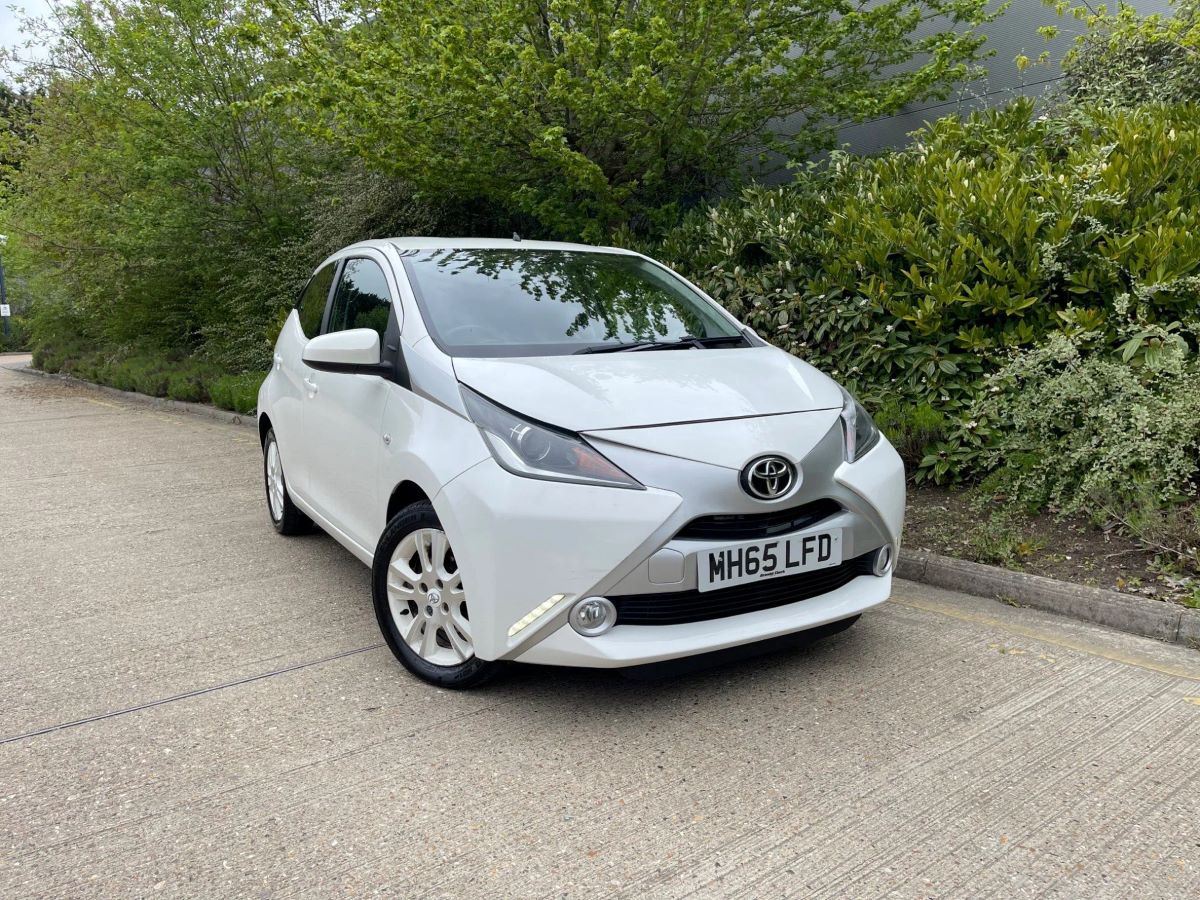
The boot also leaves something to be desired; with just 226 litres of space, it’s on the small side for a car with such a chunky exterior. Even the Hyundai i10 manages to offer more cargo room, without the SUV pretensions.
However, the Aygo X redeems itself with its driving experience. Powered by a 1.0-litre three-cylinder engine producing 72hp, it might not look fast on paper 0–62mph takes 14.9 seconds but it feels more spirited from the driver’s seat.
The five-speed manual gearbox is particularly enjoyable, with a smooth and satisfying gear change.In urban environments or on rural roads, the Aygo X is impressively frugal, easily exceeding 55mpg.
That strong economy does drop off on the motorway, however. Without a sixth gear, cruising at 70mph leads to increased revs and reduced fuel efficiency, bringing it closer to 40mpg.
Most Expensive Cars To Insure
Dreaming of gliding down the motorway in a luxury limousine or a high-octane sports car? You’ll need a seriously hefty budget these are some of the most expensive cars to insure.
McLaren 720S
Cost of insurance: £2993
True to its name, the McLaren 720S delivers a jaw-dropping 720 horsepower, which propels it from 0-60mph in just 2.8 seconds and on to a top speed of 212mph.
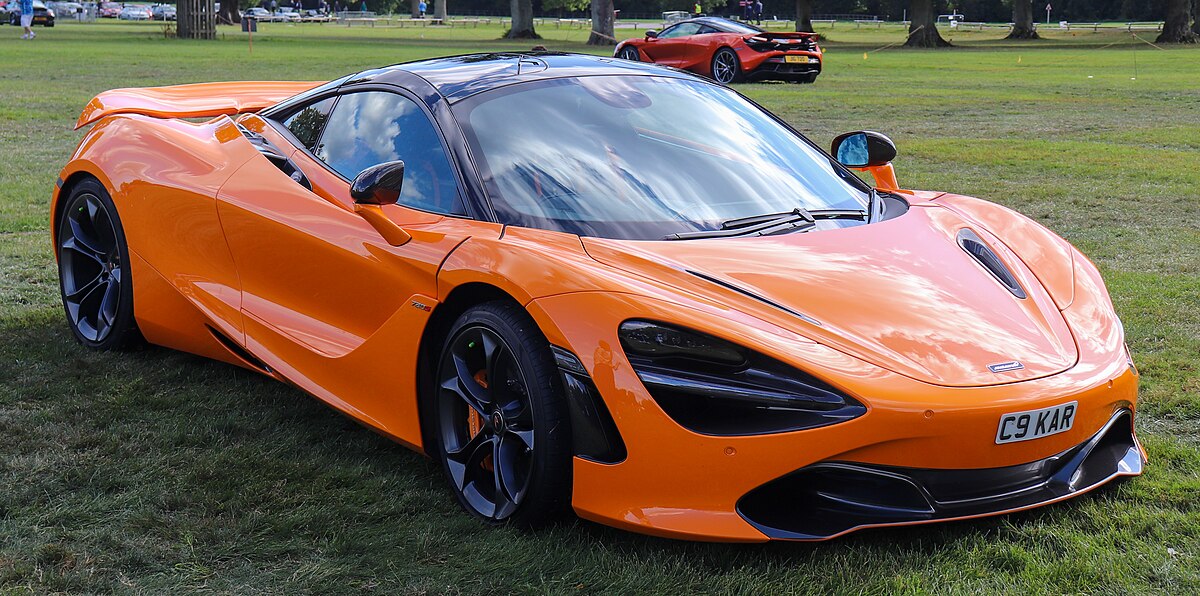
While it commands a higher price tag both to purchase and insure than its closest rival, the Ferrari 488, the 720S offers handling that is equally breathtaking.
Remarkably, it also provides a ride that’s more comfortable than you might expect from such a high-performance machine.
At the 2017 Geneva International Motor Show, British automaker McLaren unveiled its newest supercar: the 720S. Drawing on extensive experience from both Formula 1 and endurance racing, McLaren’s latest creation was highly anticipated by driving enthusiasts around the globe. The 720S certainly lives up to the hype—it has a distinct presence and undeniable charm.
This sleek and aerodynamic machine boasts an unconventional design. At first glance, the absence of visible door handles and headlights gives it a mysterious, futuristic appearance.
The door handles are cleverly concealed within the body panel, while the headlights are tucked away inside black housings. Every element of the aerodynamic design serves a purpose, contributing to a 50% increase in downforce compared to its predecessor, the 650S.
Inside, the 720S is packed with features, but the most eye-catching innovation is the folding instrument cluster. This clever TFT color display can retract, revealing a secondary, smaller screen that displays only the tachometer, gear selection, and speed—information essential for track driving and nothing more.
When flipped back up, the full-sized display returns and can also function as a screen for the backup camera, offering greater versatility.
The interior is richly appointed, with Alcantara covering the seats, center console, door panels, and rear shelf. Despite its track-focused engineering, the 720S doesn’t skimp on luxury.
Powered by a 4.0-liter mid-mounted engine, this supercar is built not only to impress but to perform, delivering thrilling speed and handling where it matters most.
Bentley Mulsanne
Cost of insurance: £3110
The Bentley Mulsanne is bold, extravagant, and designed to make a statement but those characteristics can be exactly what buyers want in a car that exudes status.
It’s also impressively refined, featuring hand-built craftsmanship and a level of luxury that can be tailored to suit the most demanding tastes.
Under the bonnet lies a wonderfully torquey V8 engine, offering plenty of power. However, such opulence doesn’t come cheap the Mulsanne is costly not just to buy, but also to run and insure.
Modern multi-millionaires often live by the mantra “time is money,” and for them, the 2020 Bentley Mulsanne Speed is a perfect match. Designed to shuttle high-powered individuals between appointments with elegance and urgency, it offers a level of prestige and comfort that suits their lifestyles.
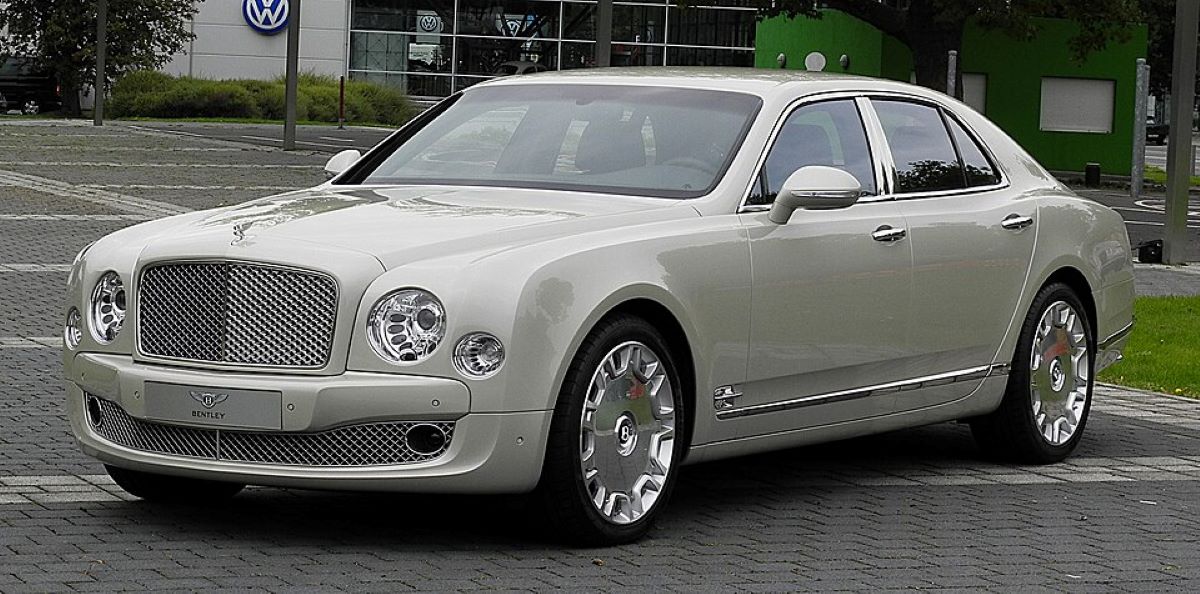
For those who may not have a chauffeur and prefer to drive themselves, the Mulsanne Speed provides a more engaging and dynamic experience than the standard Mulsanne sedan. However, the real luxury is felt from the rear seat, where passengers are transported in supreme comfort by a professional driver.
While it may not be the most technologically advanced model in Bentley’s lineup, the Mulsanne Speed exudes an old-school opulence that few modern vehicles can replicate. From every angle, it looks like it was born for this role.
For the 2020 model year, the Mulsanne Speed remains largely unchanged, with no meaningful updates introduced. Pricing starts at $345,025 and rises to $348,025 depending on the trim and selected options. Bentley offers curated configurations with exclusive names such as Bullion and Cool Crystal.
However, given the substantial investment, buyers are better off personalizing their vehicle through Bentley’s Mulliner program. With that level of expenditure, creating a bespoke automobile tailored to personal preferences is a logical choice.
Under the hood, the Mulsanne Speed differentiates itself from its competitors by employing a 6.75-liter twin-turbocharged V-8 engine instead of the V-12s found in rivals like the Rolls-Royce Ghost and Phantom or the Mercedes-Maybach S650. This powertrain delivers 530 horsepower and propels the large sedan from zero to 60 mph in just 4.8 seconds.
Despite its enhanced performance, the Speed doesn’t sacrifice luxury. Visual touches like carbon fiber trim lend it a sportier look, while adjustable dampers and air springs ensure that handling remains composed without compromising the Bentley’s signature ride quality.
As expected from a large, high-performance luxury sedan, fuel efficiency is not its strong suit. EPA estimates place the Mulsanne Speed at 10 mpg in the city, 16 mpg on the highway, and 12 mpg combined. These figures lag behind those of many full-size pickup trucks, but for a customer in this price bracket, fuel costs are unlikely to be a primary concern.
Inside, the Mulsanne Speed offers a blend of traditional craftsmanship and indulgent comfort. While the regular Mulsanne is designed for rear-seat relaxation, the Speed adds a driver-focused edge without compromising passenger pampering.
The interior features exquisitely stitched leather, expansive wood trim, and optional extras like a champagne bottle chiller with crystal flutes. Rear passengers benefit from thoughtful details like fold-down picnic tables, ideal for working on a laptop or enjoying a meal mid-journey.
Although the trunk isn’t as spacious as the car’s large size might suggest, it still accommodates enough luggage for a weekend escape. The 2020 Bentley Mulsanne Speed, with its mix of performance, prestige, and craftsmanship, stands as a unique offering in the ultra-luxury sedan segment.
Aston Martin DBS Superleggera
Cost of insurance: £3651
The Aston Martin DBS Superleggera carries a steeper purchase and insurance cost compared to its direct competitor, the Ferrari 812 Superfast.
Yet what sets the DBS apart is its driving experience it’s more involving from behind the wheel and offers greater day-to-day usability, thanks to a more forgiving suspension setup.
Aston Martins have long been known for their impressive statistics, particularly when it comes to power, speed, and price. However, one number from Italy has recently been casting a shadow over the British marque: 812—specifically, the Ferrari 812 Superfast, with its 753bhp power output.
For a time, Ferrari’s flagship model managed to outshine Aston Martin’s offerings. That is, until now. In response, Aston Martin has unveiled the DBS Superleggera—a bold statement of performance and style.
Despite the name “Superleggera” suggesting it’s ultra-lightweight, the DBS tips the scales at around 1800kg. Still, that represents a 70kg reduction compared to the standard V12 DB11 on which it is based.
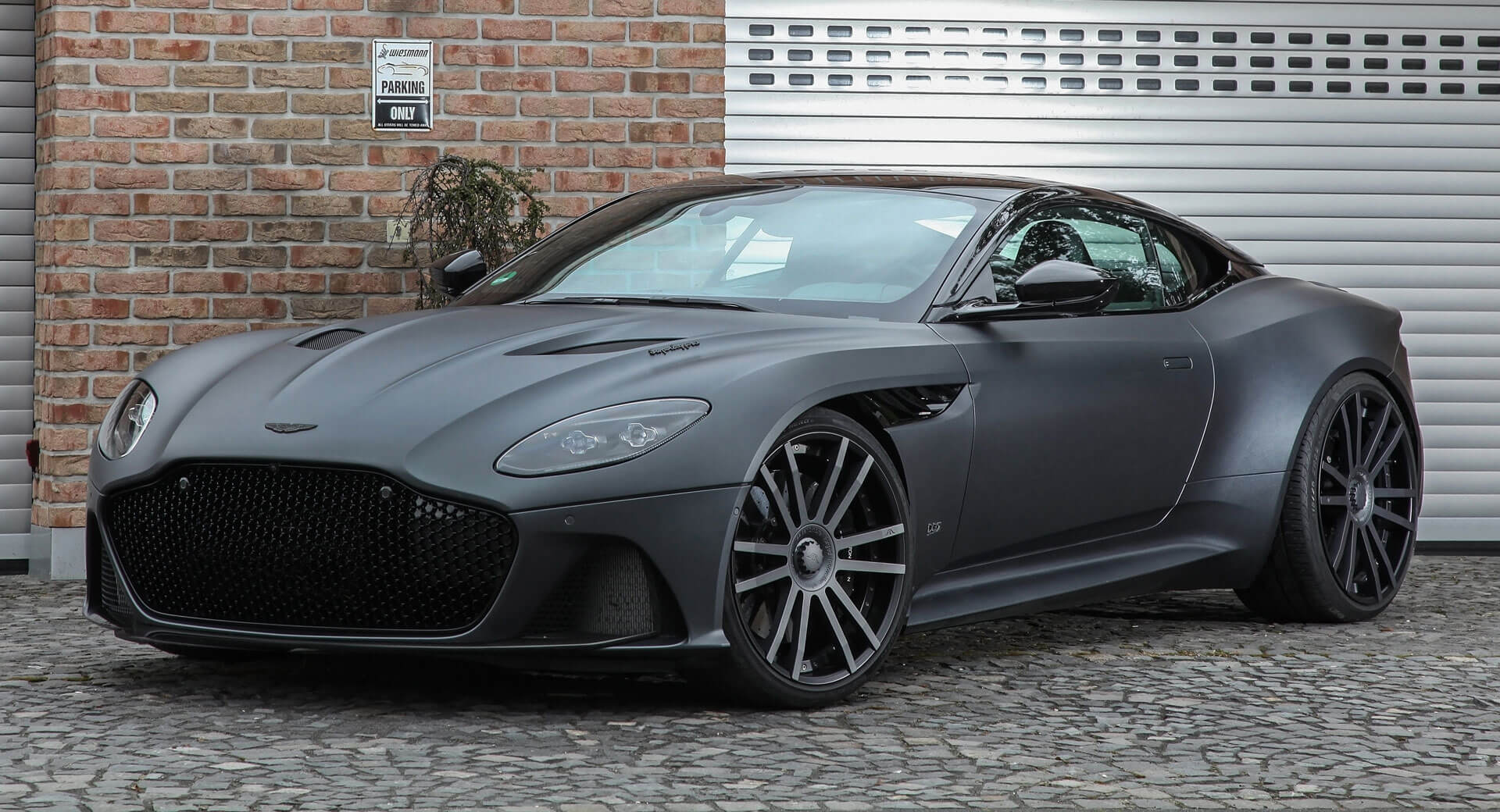
This weight saving translates into better performance figures: the DBS can launch from 0 to 62 mph in just 3.4 seconds and reach a top speed of 211 mph, given enough open road.
While it may share a platform with the DB11, the DBS is fundamentally a different car. It features a wider rear track, sits lower to the ground, and wears bespoke, wider Pirelli P Zero tires.
Its aerodynamic enhancements boost downforce at high speeds, while a throatier exhaust system amplifies its presence on the road. It also gets an upgraded gearbox to cope with increased torque, a more aggressive rear differential for sharper handling, and a revised ESP system that helps drivers tap into its immense potential. Unsurprisingly, all these upgrades come at a cost—£225,000, to be exact.
For all its performance credentials, the DBS’s interior isn’t flawless. While space for two passengers is generous and the driving position, along with seat and steering wheel adjustability, is excellent, certain interior elements fall short.
The air vents feel cheap, and there are areas where the build quality doesn’t match the price tag. Additionally, Aston Martin’s continued reliance on an outdated Mercedes infotainment system is disappointing for a car in this price range.
However, these drawbacks quickly fade once the car is in motion. The DBS’s reworked twin-turbo V12 engine delivers jaw-dropping performance, pulling hard from low revs all the way to the redline.
The sound it makes is equally astonishing. While the Ferrari 812 Superfast is quicker off the line, thanks to its lighter frame and slightly higher power output, the DBS claws back ground during rolling acceleration due to its superior torque delivery.
In terms of handling, the DBS easily outperforms the standard V12 DB11. The reduced weight, wider track, and more aggressive differential all contribute to more responsive turn-in and a generally more agile driving experience.
That said, the damp, mountainous route used during testing wasn’t ideal for exploring the car’s limits with the electronic aids turned off.
As for how it compares to the Ferrari 812 Superfast in corners, a proper back-to-back track test would be required. Still, the Ferrari’s naturally aspirated engine, quicker steering, and lower curb weight do give it a slight advantage in terms of agility and throttle response.
Yet, as grand tourers, these cars are meant to do more than just perform on track—they’re designed to transport their drivers across long distances in comfort and style.
And in this role, the DBS arguably takes the lead. It’s quieter at high speeds, more comfortable thanks to its softer GT mode suspension, and its gearbox operates more smoothly in everyday driving. Inside, its leather-clad cabin feels more special and luxurious, further adding to the experience.
In the end, the Aston Martin DBS Superleggera emerges as one of the most well-rounded and capable vehicles the brand has ever built. It delivers blistering performance, assertive styling, and a thunderous soundtrack, yet remains refined and comfortable when needed. It strikes a rare balance between raw power and everyday usability—making it a true modern-day super GT.
Honda NSX
Cost of insurance: £7230
The first-generation Honda NSX made history by combining sleek looks and high performance with the legendary reliability of Japanese engineering.
The latest version pushes the envelope even further, incorporating cutting-edge efficiency technologies into its already impressive list of attributes.
However, this modern marvel doesn’t come cheap. Starting at just over £144,000, the NSX is a pricey machine, and for a driver based in London, insurance alone can exceed £600 a month.
When the original Honda NSX debuted in 1990, it fundamentally redefined what a supercar could be. Before its arrival, high-performance exotic cars were often associated with questionable reliability, twitchy low-speed manners, and impracticality.
The NSX broke that mold, offering a mid-engine performance machine that was not only thrilling to drive but also reliable and usable on a daily basis. It set a new benchmark, influencing supercar design and engineering for decades to come.
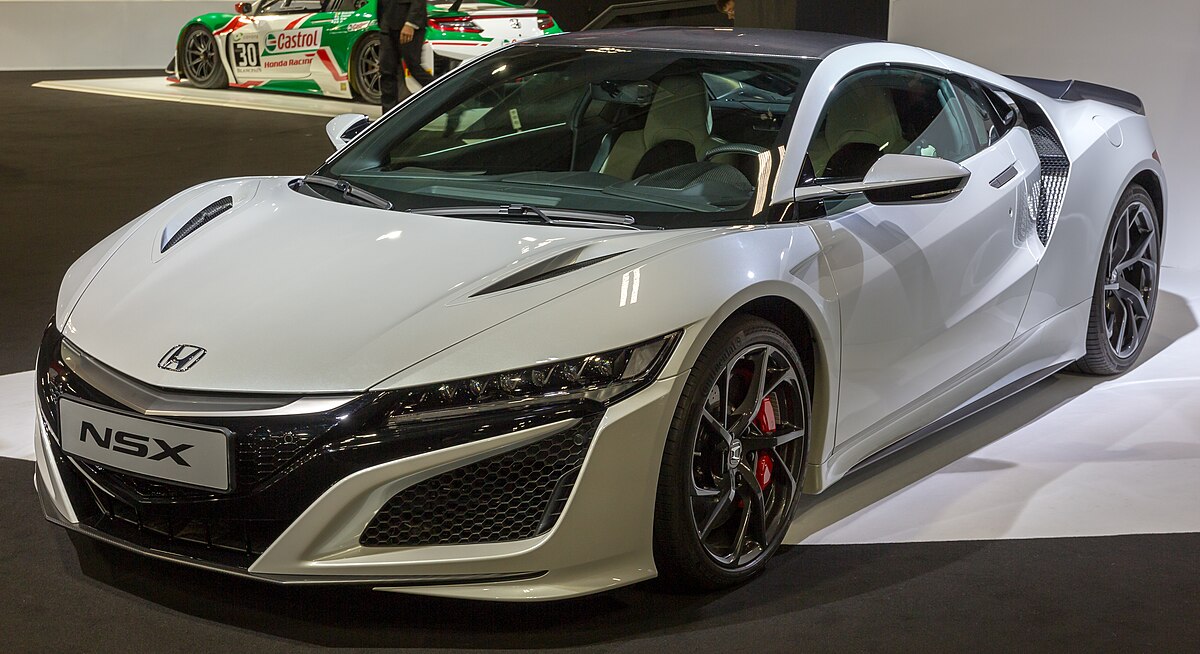
Its successor, however, was a long time in the making. After years of development delays—largely due to Honda’s determination to deliver a car with groundbreaking technological advancements—the second-generation NSX finally arrived in 2016.
The result is a vehicle that remains relatively expensive, but also one that is a showcase of engineering brilliance and an absolute joy to drive.
At the core of the NSX is a single powertrain option. A 3.5-litre twin-turbocharged V6 engine powers the rear wheels, working in tandem with an electric motor that provides an additional 47bhp of support.
Up front, each wheel is driven by its own 36bhp electric motor, which can operate independently to optimize traction by delivering power where grip is strongest, or work in unison with the V6 to maximize acceleration.
The outcome is nothing short of jaw-dropping. In a straight line, the NSX can keep pace with nearly anything short of a Ferrari 488 GTB. The hybrid system seamlessly fills any torque gaps typically associated with turbocharged engines, delivering relentless and immediate thrust.
Although the Audi R8 may boast a more emotionally stirring soundtrack, the NSX’s V6—positioned just behind the driver—emits a distinctive growl and burble that is plenty engaging and avoids the exaggerated theatrics that characterize many modern performance cars.
Handling is another area where the NSX shines. On winding roads, it is astonishingly composed. The combination of immense grip and torque vectoring from the front electric motors means the car carves through corners with surgical precision.
While it may not offer the same steering feedback or playful chassis dynamics as an Audi R8 or McLaren 570S, the NSX feels supremely stable and sharp, inspiring confidence with every turn—even when pushing the limits.
Still, the NSX is not without its flaws. Climb into the cabin, and while you’re greeted by sporty, supportive seats and a stylish dashboard layout, some of the material choices leave much to be desired, especially given the car’s high price point.
Compounding this is the infotainment system, which is essentially a carryover from lesser Hondas like the Civic or Jazz. In a car of this caliber, that might be forgivable—if the system worked well.
Unfortunately, it doesn’t. The interface is convoluted, the response laggy, and the overall user experience frustrating enough to be a real detriment to the ownership experience.
Rolls-Royce Wraith
Cost of insurance: £10,500
The Rolls-Royce Wraith stands in a class of its own. Measuring 5.3 metres in length, it’s more reminiscent in size of a Victorian semi-detached house than a typical coupé like the Audi TT and its price tag, starting at nearly a quarter of a million pounds, reflects that grandeur.
This is a car for the elite a rarefied driving and ownership experience tailored for those who can afford not to worry about running costs, including sky-high insurance premiums.
The Rolls-Royce Wraith is offered in a single, well-appointed trim level that comes loaded with premium features. Among these are adaptive headlights with an auto-leveling function, rain-sensing windshield wipers, LED taillights, and power-folding, auto-dimming side mirrors.
Inside the cabin, the front seats are eight-way power-adjustable, and every seat—front and rear—is heated for maximum comfort. Standard amenities also include dual-zone automatic climate control, an auto-dimming rearview mirror, and a power-adjustable steering column.

In terms of technology, the Wraith is equipped with an 18-speaker audio system and a built-in Wi-Fi hotspot. This luxurious grand tourer also incorporates key driver-assistance technologies, including parking sensors and lane-departure warning.
Under the hood, the Wraith houses a powerful 6.6-liter twin-turbocharged V-12 engine that delivers an impressive 624 horsepower and 605 pound-feet of torque.
Paired with an eight-speed automatic transmission, this engine sends power exclusively to the rear wheels. Despite its size and opulence, the Wraith maintains a composed and refined driving character.
The steering is light and responsive, while the air suspension is finely tuned to absorb road imperfections, ensuring a smooth and undisturbed ride for passengers. Performance-wise, the Wraith is no slouch—it’s estimated to accelerate from 0 to 60 mph in approximately 4.3 seconds.

